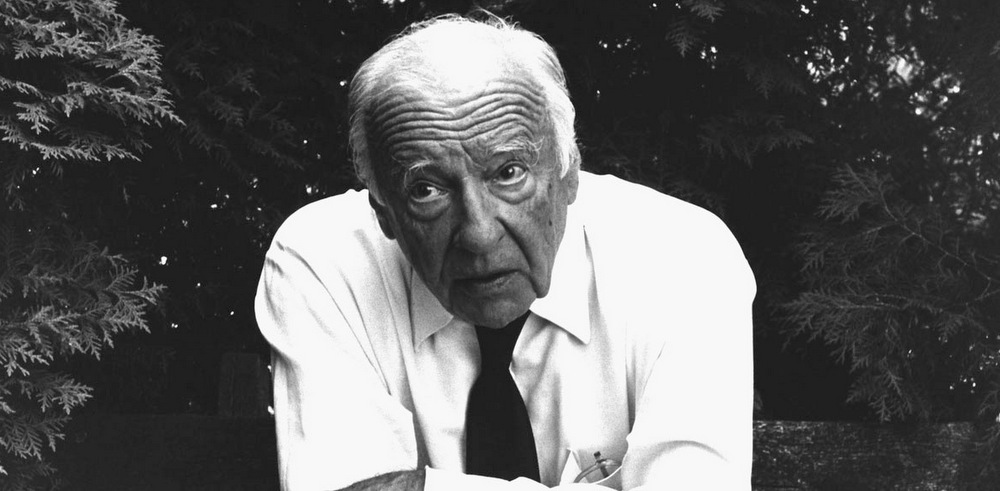When Gadamer directed his attention to the topic of beauty in his celebrated 1977 essay The Relevance of the Beautiful, he was turning back his attention from issues of language and meaning, to the question of artistic experience that had been so crucial for working out his philosophy. Approximately a third of Truth and Method dealt with aesthetics, and it played playing an important role in his hermeneutics: it was the ‘truth’ of aesthetic taste that provided a foil to the over-emphasised ‘truth’ of scientific fact, and in Gadamer’s readings of Plato, it was the forms of the Good and of Beauty that provided a mutable and relative foil to the supposedly fixed and determinate forms of number. But the nature of art was a key to understanding wider ontological and ethical issues. For Gadamer, art illuminated the nature of all beings – their constitution, development, and well-being. And his idea of beauty also holds the key to a Gadamerian answer to one of the most insoluble problems of philosophy: the fact-value distinction. In the proportions of good music, of thriving nature, of the healthy organism, there lies a way of identifying the principle that leads each person to value a given thing through the experiences of beauty, love, or faith.
The starting point is Gadamer’s redefinition of ideas, artworks, persons and situations as aspects of a broader ‘medial’ structure that is always in dynamic transformation – like a game in which players constantly bring the game into existence, giving it its own specific variant at each moment. A conversation, a reading or viewing, a meeting or relationship – all incorporate us into an event of interaction that is constantly transforming all involved, moment by moment. Gadamer sees this ‘play’ as a structural phenomenon, the “occurrence of the movement as such” as in “the play of light, the play of the waves, the play of gears and machinery, the interplay of limbs, the play of forces, the play of gnats, even a play on words”.[1] Here we see the importance of the structural change of the self as part of art and meaningful encounters; the artwork changes us, alters our structure of experience, association, memory, attention, intention, etc. A powerful work leaves us significantly altered, it fuses itself into us in some way. It is for this reason that Gadamer argued that the experience of art is best understood not as a subjective experience, but rather as a structural relation into which we are assimilated:
When we speak of play in reference to the experience of art, this means neither the orientation nor even the state of mind of the creator or of those enjoying the work of art, nor the freedom of a subjectivity engaged in play, but the mode of being of the work of art itself…[2]
This shifting of the explanation of aesthetic experiences away from subjectivism and towards the over-arching structure of ‘play’ is the first step in his theory of value. The implication is that all things, persons and objects can be seen as temporally extended structures within the broader structure of the encounter – like themes in a symphony or a visual pattern, dynamically changing through time and relation to their environment and the plurality of themes and elements within themselves.
Gadamer holds that the ability of art or other things to transform us in unexpected ways into something fresh and different – is what furnishes much of their appeal. Gadamer uses the analogy of games that are capricious and unpredictable, involving the risk of being overwhelmed. In a game:
…there always has to be… something else with which the player moves and which automatically responds to his move with a countermove. Thus the cat at play chooses the ball of wool because it responds to play, and ball games will be with us forever because the ball is freely mobile in every direction, appearing to do surprising things of its own accord.[3]
Embedded within this passage is the seed of a Gadamerian philosophy of Otherness as the possibility and source of newness and radical change in the self. For the present purposes it means that one element of the value of any work or encounter is this ability to change us in potentially radical ways.
This structural changefulness, as we have seen, is something that Gadamer believes Plato and Aristotle, each in their own way, to have considered fundamental to Being. Aristotle in particular notes that ‘self movement’ is “the most fundamental characteristic of living beings,”[4] constituting an essential part of their vitality. Lives, like artworks, like organisms are structures that are open to an ‘excess’ of future possibilities. Here we have a striking contrast to of the tradition-oriented, past-facing, continuity-prioritising image of Gadamer that was promoted by Jurgen Habermas, Jacques Derrida, John Caputo and other continental thinkers. Music improvisation best demonstrates the changeful complexity and relative continuity of beings; it provides a form of continuity-in-transformation that Gadamer calls “hermeneutic identity”.[5] So too each game (we now can read game/artwork/theme/person/object/idea/situation/relationship) “has its own proper spirit” which is determined by the way it is “patterned in various ways”, differing in each case.[6] This intrinsic and changing structure of development is likened to a tempo, a sense of rhythm, or an “autonomous time” that applies to events, artworks, and people (and as he notes, festivals).[7]
This autonomy manifests in what he calls an “organic unity,”[8] a kind of “center within itself”[9] to each artwork or being, according to which a development is experienced as ‘good’ or ‘bad’.
So what constitutes a ‘good’ development, and what a bad one? Why do we love one person or idea, and not another? Gadamer’s reading of Plato suggest that developments bestow more or less ‘value’ on the existing structure in its own character, insofar as their transformation is in ‘proportion’ (‘symmetria’ or ‘metrion’) with the existing structure. This means less that it repeats what was there before, than that it creates something new that ‘fulfils’ the dispositions of the structure. This idea is illuminated in the late writings on ‘health’ as requiring “a harmonious relationship”[10] and is also found in Plato’s The Statesman (a dialogue Foucault also uses to explore governmental approaches to legislating for the care of individual subjects). But a ‘harmony’ in the technical sense of the word is not necessarily ‘harmonious’ in the conventional sense of being ‘pleasant’ or easy; Plato’s account of Eros as a need for what we are not/have not, in the Symposium, reminds us that this harmony require radical change as well as sameness.
Further, what produces a ‘harmony’ for each of us is often unknowable in advance, due to the fact that it is not merely a part of us, a few ‘key’ elements that are altered through encounters, but the whole structure, including the marginal, hidden, subtle, elements; undercurrents, forgotten memories, and subconscious impressions, recent and long-term goals, desires, fears, hopes, and the influence of new events, circumstances, and interventions. To use the analogy of music, the structure of a piece of music may benefit from counterpoint, dissonance, interruption, inversion as well as repetition and expansion. So too in painting, spontaneity is essential in a Jackson Pollock painting because without it his work would not have the subtlety and rich personal interpretability that defines it. Disruption of pattern is part of a John Cage composition without which it would not be able to engage the audience in themes of openness and attentiveness.
This immense complexity of our structure explains why we cannot simply choose what to find beautiful, who to love, or what to believe. The harmonies of the self as often deal with the hidden order, as the visible one. It is partly this that makes beauty, love and all our sense of ‘the good’ so mysterious to us ourselves and to any observer.[11] Further, to have continuing value the new structure that is created by our relation with something must continue to produce new proportional developments of our structure as we naturally develop over time in connection with our whole environment and inner growth. Love-relationships, then, require a creative development of the combined structure that is created by the union. Belief must also be made anew in our own experience and activity: for value to exist, the symphonic composition of Being must continue its ever-new creation of themes and harmonies.
Further still, there is not only one possible harmony; all structures possess various possibilities of proportional development with different kinds and degrees of value. Some artworks illustrate this diversity of structures, of beauties: the Brothers Karamazov can be seen as an exercise in relative values, and Wuthering Heights illustrates two contrapuntal developments of a single theme. Two couples face similar obstacles: Catherine and Heathcliff tragically fail to reconcile their external differences, focusing only on their inner consonance to the point of mutual annihilation, while Catherine and Hareton happily work to slowly reconcile their outer differences by patiently spending time together and educating each other. There is no ‘right’ answer; both stories have their beauty in proportion to broader structures of meaning in the world. One is a powerful tragedy that resonates with the frustrations of compromise, and the urgency of our deepest desires – there may even be a ‘value’ for the protagonists in the way the cessation of structure (in the failure of their relationship and their eventual deaths), preserves the pure experience of early love unaltered. But the second story also has a beauty that speaks to the tender patience required to struggle with reality and win out. Such examples give a taste of the multiple harmonies that are possible for every structure. So too in love, a person who strengthens us and creates calm will inspire love in certain contexts, while someone who challenges us and calls us to follow new plans or ideals will do so at another. The same principle of structure-specific relativity applies in ethics: different persons, communities, and cultures will be struck by different values.
But while value here is relative (in that it takes a different form in every structurally unique context), it is objective in that its necessary quality of proportionality is universal: we have no power over it without changing ourselves – which incidentally explains why heartbreak is not just a painful experience, but an injury to one’s structure – we have lost a part of ourself and cannot recovered until we have become differently structured again, something that only new development can achieve. And so too we cannot decide to believe or disbelieve – we can only seek encounter and discover the pattern of our own changes, proportions and hidden harmonies.
[1] Truth and Method, Joel Weinsheimer and Donald Marshall trans. and ed., (Great Britain: Continuum, 2004), p.104.
[2] Truth and Method, p.102-3.
[3] Truth and Method, p.106.
[4] “The Relevance of the Beautiful” in The Relevance of the Beautiful and Other Essays, Robert Bernasconi ed. (Cambridge: Cambridge University Press, 1986), p.23.
[5] “The Relevance of the Beautiful” p.25.
[6] Truth and Method, p.107.
[7] “The Relevance of the Beautiful” p.42.
[8] “The Relevance of the Beautiful” p.42-3.
[9] “The Relevance of the Beautiful” p.43.
[10] “Treatment and Dialogue” in The Enigma of Health: The Art of Healing in a Scientific Age, Jason Gaiger and Nicholas Walker trans. (Stanford: Stanford University Press, 1996), p.132
[11] “On the Enigmatic Character of Health” in The Enigma of Health, p.115.
Article by Jessica Frazier





